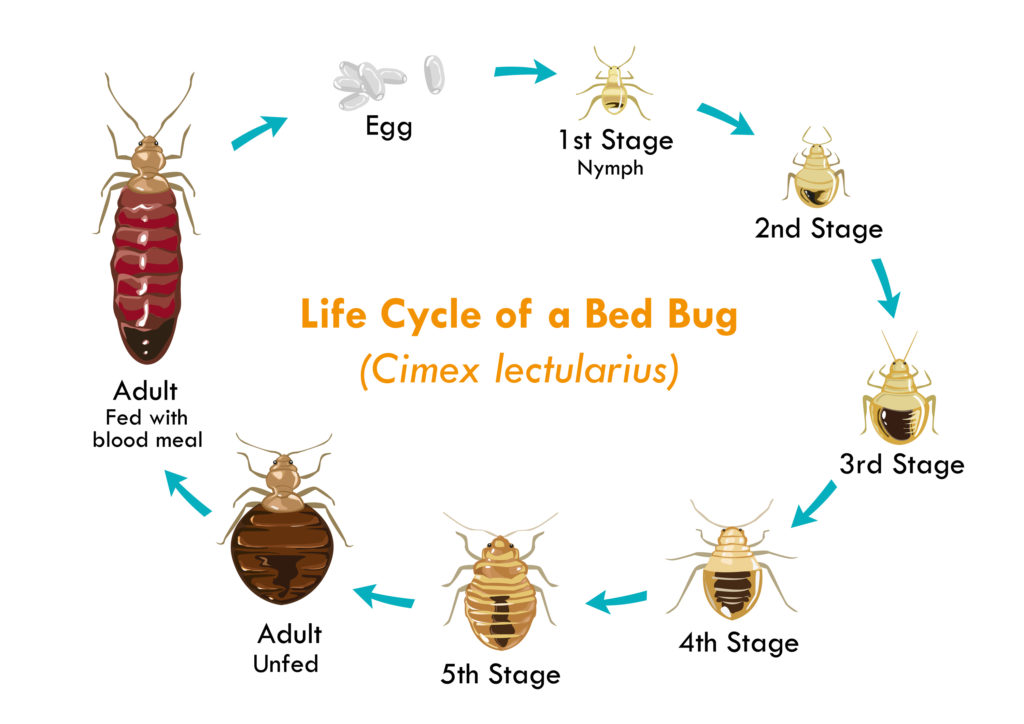 Introduction
Introduction
Prior to the 1950s, most people had a certain level of bed bug awareness. Whenever they left home, in the back of their minds, they were conscious that they might encounter bed bugs. People modified their behavior to prevent bringing bed bugs back home with them. For example, if a woman went to the theater, she would not just put her handbag and wrap into the seat next to her because she was aware that bed bugs might be there. If someone stayed at a hotel, they would check the room for bed bugs before unpacking their bag. Apartment managers were also bed bug conscious and made new tenants fumigate their belongings (usually in the complex’s own fumigation chamber) before letting them to move in.
Because bed bugs have not been a problem in the United States for close to 50 years, we have lost our bed bug consciousness. If we go to the movies, we throw our purses and jackets into the empty seat next to us. When we ride in a taxi, we set our computer bags on the seat and put our luggage in the trunk. If we go to the laundromat we set our clothes basket on the floor or on the top of the washer. If we stay in a hotel, we throw our suitcases on the extra bed. We don’t think twice about buying a chair at a garage sale or storing our daughter’s furniture in the spare room. However, all these behaviors make us vulnerable to bed bug infestation. This publication is intended to make you aware of the many ways that bed bug infestations get started in homes and apartments, and to help you protect your home against bed bug invasion.
- What are bed bugs?Bed bugs (Cimex lectularius) are small, flat, parasitic insects that feed solely on the blood of people and animals while they sleep. Bed bugs are reddish-brown in color, wingless, range from 1mm to 7mm (roughly the size of Lincoln’s head on a penny), and can live several months without a blood meal.
- Where are bed bugs found?Bed bugs are found across the globe from North and South America, to Africa, Asia and Europe. Although the presence of bed bugs has traditionally been seen as a problem in developing countries, it has recently been spreading rapidly in parts of the United States, Canada, the United Kingdom, and other parts of Europe. Bed bugs have been found in five-star hotels and resorts and their presence is not determined by the cleanliness of the living conditions where they are found. Bed bug infestations usually occur around or near the areas where people sleep. These areas include apartments, shelters, rooming houses, hotels, cruise ships, buses, trains, and dorm rooms. They hide during the day in places such as seams of mattresses, box springs, bed frames, headboards, dresser tables, inside cracks or crevices, behind wallpaper, or any other clutter or objects around a bed. Bed bugs have been shown to be able to travel over 100 feet in a night but tend to live within 8 feet of where people sleep.
- Do bed bugs spread disease?Bed bugs should not be considered as a medical or public health hazard. Bed bugs are not known to spread disease. Bed bugs can be an annoyance because their presence may cause itching and loss of sleep. Sometimes the itching can lead to excessive scratching that can sometimes increase the chance of a secondary skin infection.
- What health risks do bed bugs pose? A bed bug bite affects each person differently. Bite responses can range from an absence of any physical signs of the bite, to a small bite mark, to a serious allergic reaction. Bed bugs are not considered to be dangerous; however, an allergic reaction to several bites may need medical attention.
- What are the signs and symptoms of a bed bug infestation?One of the easiest ways to identify a bed bug infestation is by the tell-tale bite marks on the face, neck, arms, hands, or any other body parts while sleeping. However, these bite marks may take as long as 14 days to develop in some people so it is important to look for other clues when determining if bed bugs have infested an area. These signs include:
- • the bed bugs’ exoskeletons after molting
- • bed bugs in the fold of mattresses and sheets
- • rusty-colored blood spots due to their blood-filled fecal material that they excrete on the mattress
- • or nearby furniture
- • a sweet musty odor
- How do I know if I’ve been bitten by a bed bug?It is hard to tell if you’ve been bitten by a bed bug unless you find bed bugs or signs of infestation. When bed bugs bite, they inject an anesthetic and an anticoagulant that prevents a person from realizing they are being bitten. Most people do not realize they have been bitten until bite marks appear anywhere from one to several days after the initial bite. The bite marks are similar to that of a mosquito or a flea — a slightly swollen and red area that may itch and be irritating. The bite marks may be random or appear in a straight line. Other symptoms of bed bug bites include insomnia, anxiety, and skin problems that arise from profuse scratching of the bites. Because bed bug bites affect everyone differently, some people may have no reaction and will not develop bite marks or any other visible signs of being bitten. Other people may be allergic to the bed bugs and can react adversely to the bites. These allergic symptoms can include enlarged bite marks, painful swellings at the bite site, and, on rare occasions, anaphylaxis.
- How did I get bed bugs?
Bed bugs are experts at hiding. Their slim flat bodies allow them to fit into the smallest of spaces and stay there for long periods of time, even without a blood meal. Bed bugs are usually transported from place to place as people travel. The bed bugs travel in the seams and folds of luggage, overnight bags, folded clothes, bedding, furniture, and anywhere else where they can hide. Most people do not realize they are transporting stow-away bed bugs as they travel from location to location, infecting areas as they travel. - Who is at risk for getting bed bugs?Everyone is at risk for getting bed bugs when visiting an infected area. However, anyone who travels frequently and shares living and sleeping quarters where other people have previously slept has a higher risk of being bitten and or spreading a bed bug infestation.
- How are bed bugs treated and prevented?Bed bug bites usually do not pose a serious medical threat. The best way to treat a bite is to avoid scratching the area and apply antiseptic creams or lotions and take an antihistamine. Bed bug infestations are commonly treated by insecticide spraying. If you suspect that you have an infestation, contact your landlord or professional pest control company that is experienced with treating bed bugs. The best way to prevent bed bugs is regular inspection for the signs of an infestation.
Have a pest problem that we haven’t covered here? Just give a call at 1-817-558-PEST (7378) and talk to a Double D representative, or
- You can send us a e-mail.
